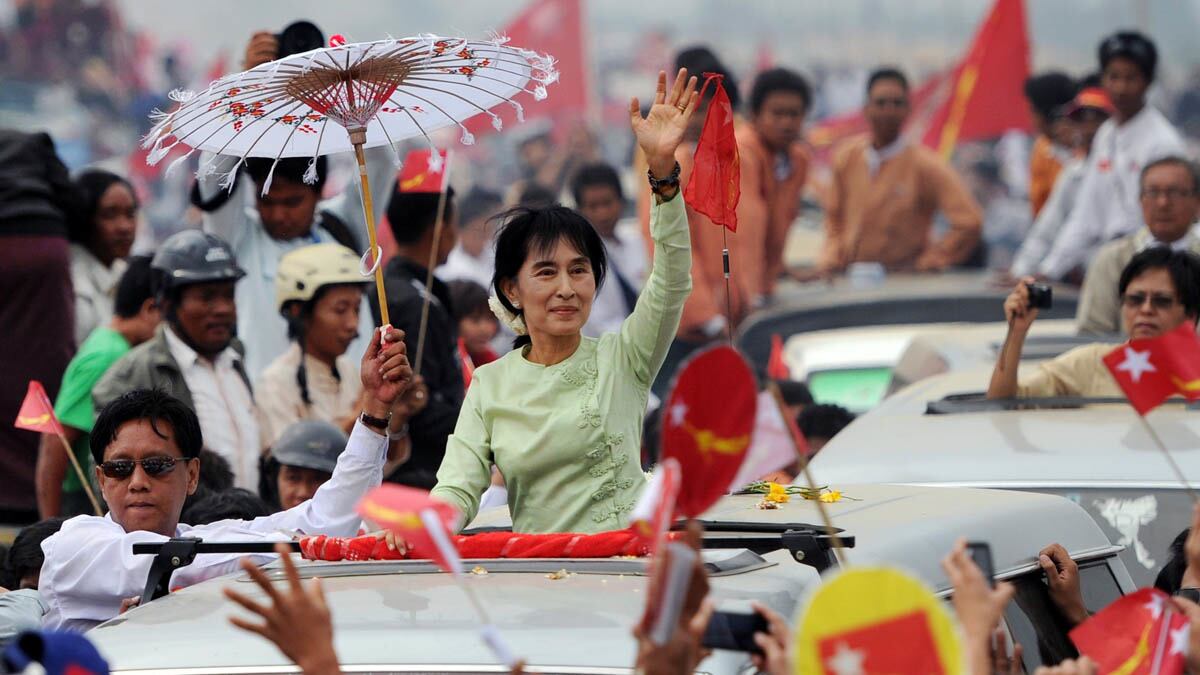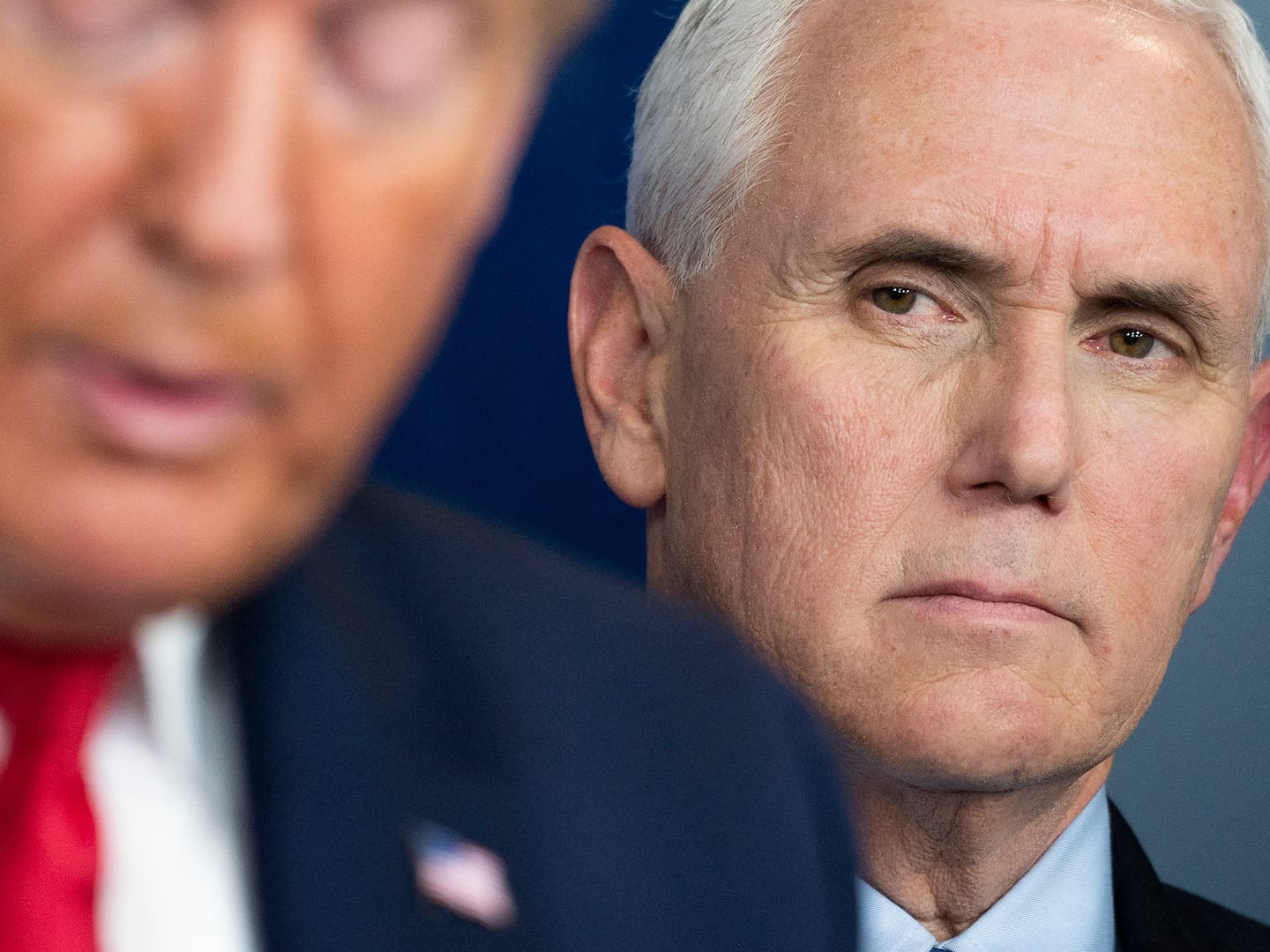Is President Thein Sein of Burma banking on the Buddhist morality of his people to guarantee his political survival to a ripe old age, or merely on their passivity? And whichever it is, could he be making a big mistake?
By launching his nation on a long-overdue process of reform last year—a process that reaches an important way station on Sunday with by-elections, which should see Nobel Peace laureate Aung San Suu Kyi’s National League for Democracy win many seats—Thein Sein has shown his willingness to embrace a party and a leader his predecessors considered mortal enemies. But he has also displayed calm confidence that he and his fellows at the summit of Army command—he only removed his general’s uniform to take up the post of president—will not be destroyed by the sort of righteous rage that descended on Saddam Hussein, Hosni Mubarak, and Muammar Gaddafi.
But after seeing a new documentary currently on tour in the United States, Into the Current—which chronicles the voices and stories of some of the thousands of ordinary Burmese whose lives were brutalized in, numerous cases actually ended by the Army—one cannot help feeling that Thein Sein’s bet is quite a bold one to make.
Listen to these tales of good lives mangled and weep. A leader of the Shan people’s party—an ethnic group long under siege by the junta—was rewarded for winning a seat in Parliament with a jail sentence of 93 years. A youngster, one of many, was given a seven-year sentence for handing out a single leaflet in the street. The toothy, lanky student leader Min Ko Naing, the charismatic orator and poet thrown up by the uprising of 1988, served 16 years in solitary confinement for his deeds.

Buddhism proscribes killing and there are no official death sentences in Burma, but the regime got around that by sending sick prisoners like the comedian Zaganar—given a 59-year sentence for speaking to the foreign media about Cyclone Nargis in 2008—to an unheated jail in Kachin state in the freezing north, a latitude bound to wreak havoc with his heart condition. He was fortunate to survive.
The list goes on and on: wave after wave of repression lasting 22 years, from 1988 to 2010, cull after cull of the bravest and boldest of one generation after another; the finest hopes and brightest brains of the country, locked away or mouldering in refugee camps or driven into exile. And after all that, the Burmese Army expects mercy, understanding, forgive-and-forget?
I remember asking Ma Thanegi, once Suu Kyi’s close friend and her companion on the early campaign tours, why the regime was afraid of the leader the Burmese call "The Lady"; why they were determined to keep her locked up. Ma Thanegi blamed a single throwaway phrase Suu had used in an interview: when asked what should happen to the generals with civilians’ blood on their hands, she is said to have replied, “Let the people decide.” “Let the people decide, indeed!” Thanegi fumed. “Let the people decide and the generals are all dog meat!”
I don’t know if Suu Kyi used those precise words, but they would not have been out of character at the start of her career. While already firm about nonviolence, she denounced the Army’s leaders in strong and personal terms.
Fast forward 20 years, and nonviolence, once seen as one option among several for the Burmese opposition, is now unchallenged. And it is reinforced by the Buddhist piety that is also an intimate part of Suu Kyi’s own life, and which, after her first years in detention, has caused her tone to mellow. Near the end of this film, we hear that new tone. “I do believe that justice will prevail in the end,” she says. “But don’t forget that justice must always be tempered by mercy ... There is none of us who could do without mercy.”
Into the Current—directed by Jeanne Hallacy and coproduced with the Democratic Voice of Burma—brings together much original footage that has never been accessible before, and in doing so paints the most detailed video portrait yet of how the Burmese democracy movement suffered and rose again and finally prevailed against impossible odds. The central figure is Bo Kyi, a student leader in 1988 who fled to Thailand to avoid a second spell of jail, and set up the Assistance Association for Political Prisoners (AAPP) in Mae Sod, on the Thai-Burma border. His organization kept the flame of commitment burning for those in jail when the rest of the world had moved on.
As the testimony of Bo Kyi and many others brings out, prison wasn’t just punishment; it was humiliation, a way to terrorize those still outside into passivity. It was explicitly seen as a means to reduce women and men of courage to useless husks when they finally reemerged. And there was no good reason to believe, until just last year, that things would ever change.
Into the Current ends, aptly, with Burma’s democrats beginning to do just that: to enter the political current of their own country, with all the challenges and risks of politics. Min Ko Naing is said to be stressed out by the attentions of the nation’s new, semifree press. The Norway-based Democratic Voice of Burma, whose brave video cameramen paid for their work in recording 2007’s Saffron Revolution with long jail sentences, is looking for a home in Rangoon, now that all those cameramen are free again. Everyone is tired out and ecstatic and consumed with anxiety and, in some part of their brains, still incredulous. Because so much has happened so fast. And there is always a nagging fear that the gears could crunch into reverse. It has happened before.






